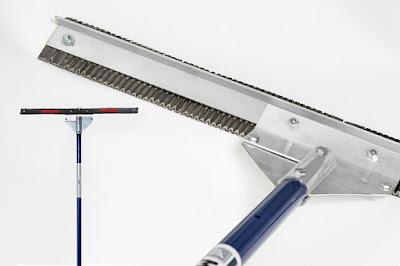What Type of Duckweed Do I have in my pond?
There are three common types of duckweed in North America. Common Duckweed, Giant Duckweed and Dotted Duckweed.
Where Can Duckweed Grow?
Duckweed can be found
in ponds, lakes and streams.
Where Does it Grow?
Duckweed grows in dense colonies in quiet water, undisturbed by wave action. Usually there is more than
one species of duckweed inhabiting a body of water.
Is it invasive?
Duckweed normally is an aggressive intruder of ponds and are often found mixed in with other unwanted weeds. If masses of duckweed cover the surface of the water, then oxygen is depleted and
fish kills will most likely occur. Therefore it is necessary to get control before they completely cover the surface of the pond.
Pros and Cons of Duckweed
Submerged parts of
all aquatic plants offer habitats for several species of invertebrates.
These invertebrates are then used as food by fish and other wildlife species
(e.g. amphibians, reptiles, ducks, etc.). When the duckweed dies off, their
decomposition by bacterium and fungi provides food (called “detritus”) for several aquatic invertebrates.
Where Does it Grow?
Dotted duckweed is non-native and can be
found in rivers, ponds and lakes.
Is it Invasive?
The Dotted
duckweed is usually an aggressive invader of ponds and are often found growing with other duckweeds, mosquito fern, and/or watermeal. If these groups of duckweed cover the
surface of the water, then oxygen depletion and fish kills can occur. These
plants need to be controlled before they cover the whole surface of the pond.
Where Does it Grow?
The Giant Duckweed grows in ponds, lakes, bayous, and sluggish streams. Often more than one type of duckweed will grow together in these colonies.
Is it Invasive?
Although the giant
duckweed is a native weed, it can be an aggressive invader of ponds and are often
found mixed in with other duckweeds, mosquito fern, and/or watermeal. If this group of aquatic weeds cover the surface of the water, then the oxygen in the pond depletes and fish kills
can occur. These plants need to be controlled before they move over the entire
surface of the pond.
Pros and Cons of Giant Duckweed
Many types of ducks
consume duckweed and frequently transport it to other bodies of water. Thick duckweed colonies offer habitats for many species of invertebrates, but if duckweed
completely covers the surface of a pond for an extended period, it will cause
oxygen depletion. These colonies will also eliminate submerged plants by hindering sunlight penetration.
How to CONTROL Duckweed
One method is by using a lake rake to rake it off the pond's surface.
Duckweed as well as other forms of aquatic
weeds prefer stagnant water environment. Adding a pond aerator puts oxygen back
in the pond and will get rid of Duckweed and prevent it from coming back.
Ducks will eat
duckweed but they will not control it.
Beneficial Bacteria
BactiMAX+ will remove ammonia, nitrite,
nitrate, and organic debris (dead leaves, uneaten fish food, fish waste, etc.) the
ingredients that aquatic weeds need to thrive.
- ·
Bacillus amyloliquefaciens.
Degrades starches and carbohydrates
- · Bacillus subtilis. Degrades
starches, proteins, and fats
- · Bacillus licheniformis.
Converts nitrate to nitrogen gas
- · Cellulomonas biazotea.
Digests cellulose




















